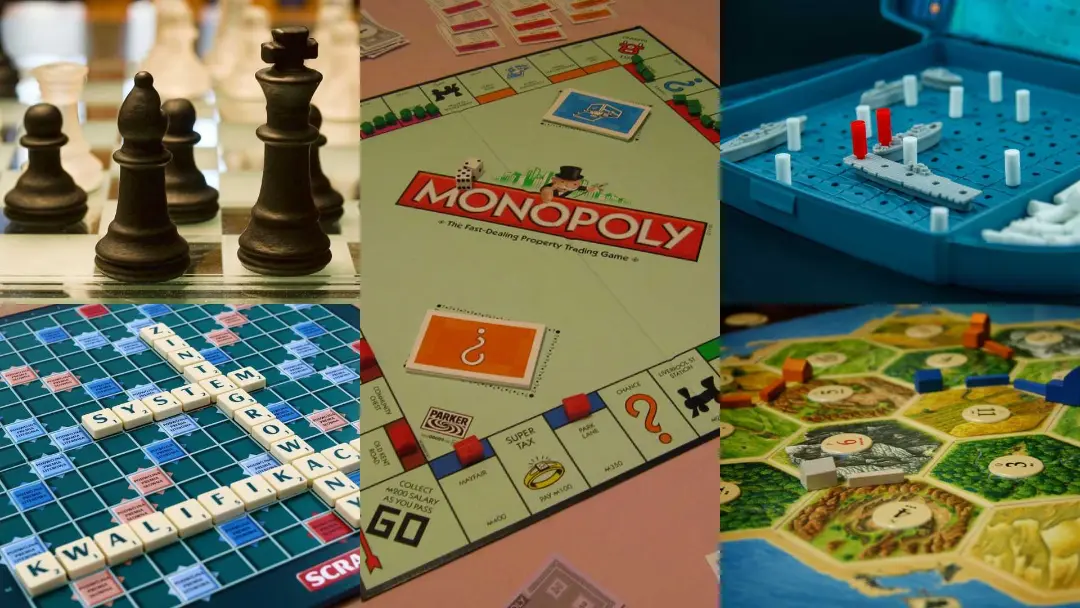What is DGBL
Learning Objectives
- DGBL definition
- What is Engagement?
- How Game Based Learning works
- What skills does DGBL develop?
Key Terms
To start our journey, we have to introduce some common terms:
- Game
- Learning
- Digital Game Based Learning (DGBL)
- Engagement
What is a Game?
Turning to discussions of what constitutes “games” in relation to learning, it is first important to recognize that across a range of disciplines and perspectives, definitions have varied. Synthesizing a number of these perspectives on games, play, and culture, we could use this definition:
A game as a system in which players engage in an artificial conflict, defined by rules, that results in a quantifiable outcome
A game is a system because it involves a set of things (rules, objects, players, etc.) that affect each other within an environment to form a larger pattern that is different from any of the individual parts. A game also involves players-active participants interacting with the system of the game in order to experience the play of the game. Not all games need a conflict, a contest between players (e.g., solo games such as solitaire or cooperative games). All games involve rules that provide the structure out of which gameplay emerges, by delimiting what a player can or cannot do. Finally, this definition asserts that all games involve some kind of quantifiable outcome - in its simplest form, a state of victory or defeat.
What is Learning
Defining what constitutes game-based learning in DGBL necessitates a recognition of the contested nature of learning itself as a concept. Broadly speaking, there are two general metaphors that have been historically utilized by the educational research community to define and describe learning. 1. The first view characterizes learning as acquisition, be it the acquisition of knowledge, skills, dispositions, behaviors, or other outcomes deemed desirable by educators and institutions. This generally aligns with what scholars call a cognitive perspective on learning, which emphasizes internal mental processes such as memory, decision-making, thinking, and knowledge construction as fundamental to learning. It also speaks to behaviorist conceptions of learning, which tend to emphasize observable behaviors as indicators of learning. 2. The second metaphor characterizes learning as participation and emphasizes processes of socialization, mentorship, participation, and social practice. Within the field of education, this metaphor generally informs scholarship identified with a sociocultural perspective on learning, which tends to highlight social practices, identities, and relationships as core to learning.
What is game based learning?
Game-based learning is a pedagogical approach that involves designing learning activities through games where the game characteristics and game principles inhere within the learning activities themselves.
The design of more engaging curriculum needs to include techniques that teaches students how to be critical, confident and creative as well as abilities that they will need for success in the work-a-day future life. Games have this techniques and features.
Gaming is inherently motivating, which may allow learners to gain skills and knowledge, by leveraging entertainment and weaving it within learning environments. Research studies indicate that video games in particular have great engagement and education related benefits.
📽 #VIDEO Games and the Future of Education
Different types of GBL
In order to understand GBL better, its different types can be examined along with taking the following into consideration: the place where the game happens, and the environment in which the students play. The three types of GBL are:
Board games

Board Games are usually played by one or more players around a table (they are also called Tabletop Games). Monopoly can be considered an educational game. It has all the necessary elements: a story, characters, points, competition, and many other aspects. There are many examples of Monopoly-like games for schools with modified rules for different subjects, like History Monopoly or Math Monopoly. Board Games are used with great success to explore and teach. But it's not the focus of this course.
Real life games

The environment here is the real world. This is probably the most motivating, but also the most stressful type of game. In this kind, students must move, act, use their body and their minds in order to play. This is the most immersive type and it provokes students in almost every aspect of their learning. Since there is the possibility to move into a certain space, the real life game is often connected to the theatre. It’s easy to find role play activities, as well as simulations or drama in this type of game learning. Students act “as if they were” a character of the game, make decisions according to their goals, the environment, and the rules (Living Role Playing Game). We'll see that the Augmented Reality technology allows digital games to be played in the real world.
Digital games
Just as analog games can take on a variety of forms, so too can digital games appear on a multitude of computer-based electronic platforms. These include games installed as software on personal computers, as well as games played through television-attached gaming consoles such as the Sony PlayStation or Microsoft Xbox. Digital game platforms also include dedicated handheld platforms, such as the Nintendo Gameboy and its various incarnations, as well as mobile smartphones and tablet computers. These games can be engaged as a single player, with multiple players in a single physical location, or with players across distances using online connective features.
Digital vs Analog games
There are at least four key traits that distinguish digital games from non-digital ones. 1. The first is that digital games can offer experiences of interactivity that are generally characterized by both immediacy and focus. This is largely by virtue of the fact that digital games are programmed into computers. Programming provides increased immediacy of feedback because the system is automated to respond to player input. Programming also provides a narrowed range of interactivity because possible player inputs and outcomes are limited by what a digital game developer has programmed into the software. 2. Second, digital games and digital media more broadly make use of a computer’s affordances for collecting, storing, retrieving, manipulating, revealing, or even concealing information in the form of images, text, animations, sound, and even player behavioral data. 3. Third, due to their computational nature, digital games have the potential to automate systems and procedures that may be far more complex for non-digital games to simulate. Examples of these complex systems include simulated environmental features in computer-based role-playing games: terrain–movement interactions, lines of sight, weather cycles, and even interactions with animals or non-player characters in the virtual game world. 4. Finally, many (although not all) contemporary digital games have the ability to facilitate communication between players across networks, such as the online networks that connect players in multiplayer, internet-connected games. These communication-facilitating features can include technologies that enable voice or text chat between players within a particular game.
What is Digital Game-Based Learning?
Digital game-based learning refers to learning by solving problems or accomplishing tasks through computers, mobile phones, or tablets. There are several elements in digital game-based learning, such as fun, play, goals, competition, and problem-solving.
Studies have investigated DGBL in different subjects, such as Literacy, Maths, Sciences, and STEAM. The results indicate that DGBL could improve students’ learning motivation, learning performance, reduce their cognitive load and anxiety.
{: .highlight }
Game based learning (GBL) is a type of game play that has defined learning outcomes.
Digital game based learning (DGBL) refers to using actual digital video games as learning tools.
A critical appraisal of the game-based aspect of DGBL can help better situate the usage of this concept in theory and practice. Building on learning as an acquisition metaphor, one way to define game-based learning in DGBL is by the use of digital games to promote the acquisition of a variety of knowledge, skills, dispositions, or other educational outcomes. According to this definition, learning is game-based when digital games, or certain elements of digital games such as scorekeeping, are applied toward identifiable outcomes defined by educators or institutions.
Another framing of DGBL learning as participation metaphor, characterizes the game-based aspect of DGBL as an inherent part of meaningfully participating in - that is, playing - games, regardless of their connection to some external educational outcome. According to this definition, learning is always happening when someone plays a game. Having to solve problems, overcome obstacles, or collaborate with others within and around games are all dimensions of learning. As game designer and theorist Raph Koster noted in A Theory of Fun book, a game is only “good” to the degree that it is “fun,” and a game is only fun to the degree which players are being challenged to learn to be successful in that game space.
Gamification
Gamification, often categorized as a subconcept of DGBL, describes the implementation of certain aspects of digital games (visual displays of progress, automated reward systems, scoring leaderboards, virtual avatars, and others) into non-gaming contexts such as education, business management, marketing, and even physical exercise programs.
Engagement
Engaging students in classroom content is always a hard task, and traditional forms of education have become expected and somewhat redundant, that the learning capacities of students are very weak. When students aren’t engaged, they’re more likely to disrupt class, less likely to accept challenges, have lower grades, and aren’t confident in their ability to learn.
Additionally, sustaining engagement is very important to ensure that the student is gaining the most out of their learning experience and that their cognitive skills are always stimulated. Engaging through educational video games that are built on educational content has proven to be a great way not only to keep students engaged but also to deliver complex theories/topics in an interactive manner allowing students to have a deeper comprehension of the content.

Motivation
Motivation is the force behind human performance. It can arise from physiological or psychological needs, thoughts, or emotions. Our physiological needs help us preserve optimal physical functioning, while psychological needs typically help us thrive. The source of motivation can come from within ourselves or be external to us. Both games and learning have to do with motivation, and we'll analyze this topic extensively in next chapter.
Unit review
Now that we have established what is game-based learning and why using educational video games is beneficial, please respond to the following questions:
- who can use DGBL? (students, everyone, teachers, kids)
- why is DGBL so powerful? (cheap, easy, engaging)
-
is Engagement good for learners? (yes, no, we don't know yet)
-
Create your own definition of game-based learning
- How do you believe educational video games would support your pedagogical approaches and enhance your teaching methods?
- How would you introduce educational video games in your classroom?